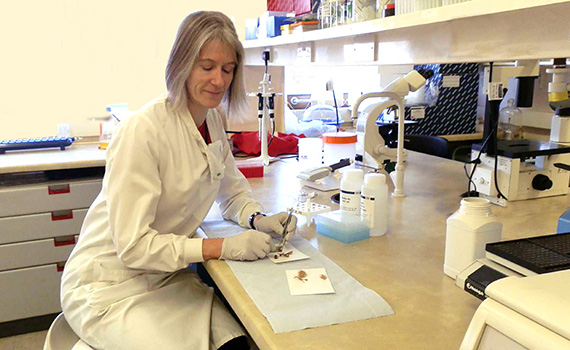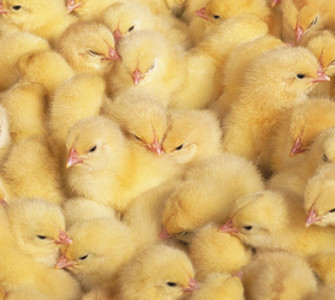New Marek’s test helps ensure successful vaccination, biosecurity
A new test is helping producers in Europe better protect their flocks against Marek’s disease (MD).
The test, developed by researchers at the UK’s Pirbright Institute in collaboration with Zoetis, can be used to diagnose MD, confirm successful vaccination and investigate causes of vaccine failure.
According to Susan Baigent, PhD, one of the test’s developers at Pirbright, many producers routinely monitor flocks to ensure efficacy of their MD vaccine programs and test for outbreaks of the virus, which is highly contagious and can cause significant economic losses. However, she says, previous tests were unable to distinguish between the most widely used vaccine virus strain CVI988 — also known as Rispens vaccine — and virulent field strains of the same viral serotype, MDV-1.
The new test has been shown to overcome this limitation: In studies, the test differentiated virulent MDV-1 strains from three different commercial CVI988 vaccines with perfect specificity.
“The ability to detect and distinguish between vaccine and virulent strains of MDV is critical to the effective management of the virus and the disease, for which no treatments are currently available,” Baigent says. “This test allows producers to accurately diagnose MD and assess the vaccine status of their flocks, so they can take the appropriate steps to optimize their vaccine programs and biosecurity.”
How it works
MDV replicates in the skin, Baigent explains, so the test — which Pirbright has transferred to the Zoetis Poultry Center for Excellence (ZPCE) in France — is conducted on feather samples taken from birds around 3 weeks of age. Spleen and tumor samples may also be collected for analysis from birds showing clinical signs of the disease.
The samples are then sent to ZPCE, where trained technicians perform the test.
Based on an analytical technique known as polymerase chain reaction, the test is designed to reproduce genetic material from MDV found in the feather, spleen and tumor samples. Probes specific to either CVI988 or virulent MDV are then used to differentiate among the various strains.
“In the best-case scenario, results would confirm the presence of the CVI988 strain, indicating that the vaccine program is working,” Baigent says. “However, detection of significant levels of virulent MDV would suggest a ‘vaccine break’ and call for investigation into MD-prevention protocols.”
Investigating vaccine breaks
Vaccine breaks — which occur when vaccination fails to prevent MD — can happen for various reasons, Baigent reports. Sometimes they arise due to improper vaccination, but there are other potential causes as well.
“A vaccine break doesn’t necessarily mean incorrect vaccination. It could also mean birds are stressed or infected with another pathogen that knocks down their immune systems,” she says.
Inadequate biosecurity can also increase the risk of vaccine failure, she notes.
“MDV can remain in a poultry house for a long time because it sheds from the skin and is often present in dust that collects on surfaces. It’s therefore important to clean and disinfect poultry houses thoroughly between flocks and remove the dust, as well as the vermin that can carry virus-infected dust between poultry houses.
“Ensuring staff are properly trained in all vaccination, biosecurity and management protocols is also critical to the prevention of the disease.”
Posted on October 23, 2017

















